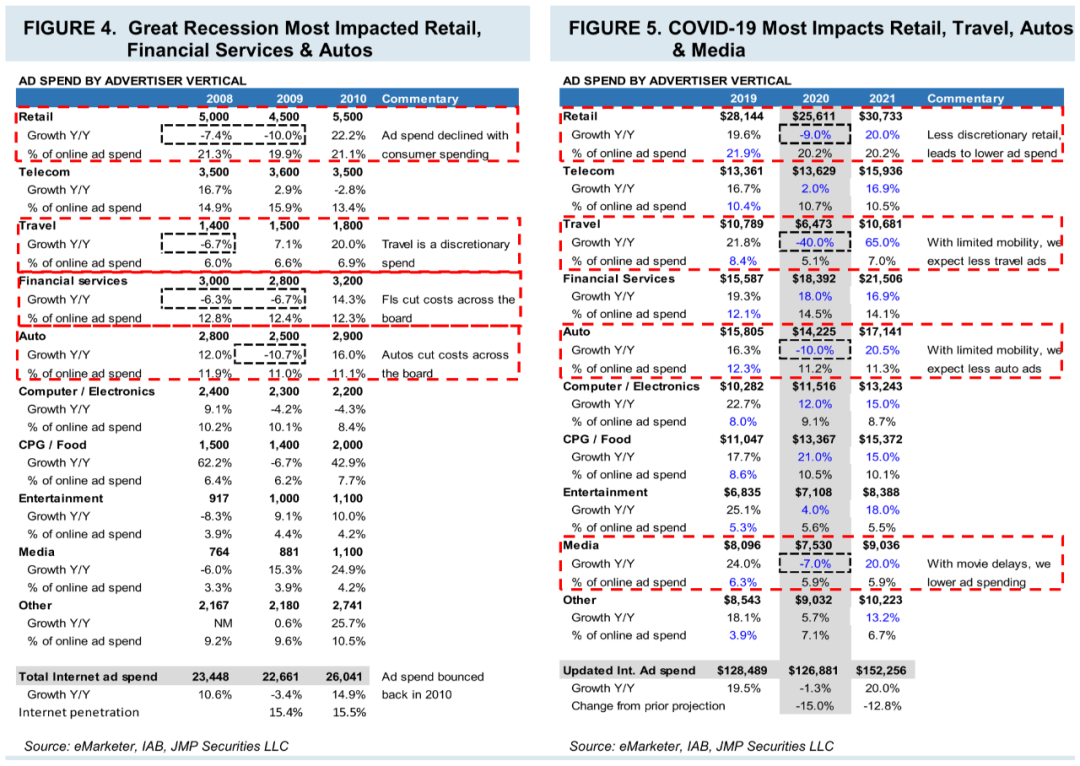The increase in traffic does not save most Internet companies from the epidemic.
Editor’s note: This article comes from the WeChat public account “Jingwei Venture Capital” (ID: matrixpartnerschina) , author: Matrix Partners Home Jun.
The new crown epidemic has caused people around the world to stay at home, and Internet traffic is growing in an unprecedented way.
Facebook CEO Zuckerberg said: “Recent visits have far exceeded the peak traffic-New Year ’s (New Year ’s Eve) growth, and almost every day a record performance.”
Internet traffic in the U.S. is increasing at a rate of 20% per week (according to Verizon ’s data); citizens are the first to restrict their homes, and traffic has increased by 20% -40% (according to Cloudflare); networks in Amsterdam, London and Frankfurt The number of visits has also increased by 10-20%. Network congestion has even prompted the European Union to require streaming companies such as Facebook, Netflix, and YouTube to reduce their clarity.
In the past 30 days, the voice and video calls of Facebook Messenger and WhatsApp have doubled, the total number of views of local news videos on Facebook has surged by 247%, and the average number of views per video has increased. 118%, which is due to the substantial increase in the amount of video itself.
YouTube is similar. Views of local news videos increased by 62%, and national news videos increased by 51%.
Twitter ’s first quarter DAU is expected to reach 164 million, which means a net increase of 12 million, which is the largest single quarter increase in history, a 60% increase from previous expectations. Video engagement on Twitter is also soaring, with global news up 150% and local U.S. news up 196%.
The growth brought about by this epidemic is unprecedented, as can be seen from the more stable TV consumption. According to Nielsen statistics, US TV consumption has recently increased by 60%, and this may not be the highest point. During Hurricane Harvey in 2017, TV consumption in Houston increased by 56%; while the 2016 Blizzard in New York led to a 45% -49% increase in the region. The effect of the epidemic is equivalent to the global experience of hurricane or Snow disaster.

If the economy stays for a long time, no company will be spared
Many technology giants cannot directly profit from the growth of news information flow.
Internet giants like Facebook, which rely on SMEs ’advertising revenues, stand at such a crossroads. On the one hand, they are enjoying a surge in demand (increasing bandwidth costs), but on the other hand, they are facing the impact of lower revenue .
Last week, some Wall Street analysts made a second or third price cut for companies whose revenue comes from online advertising. According to J.P. Morgan’s calculations, if global real GDP declines by 2.4% in 2020, global advertising expenditure may fall by 11.5%.
The Internet Advertising Bureau recently conducted a survey of 390 heads of advertising, and the results show that 74% of people believe that the impact of the new crown epidemic on advertising is greater than the 2008 financial crisis. By the second quarter of this year, 70% of the respondents have adjusted or suspended their advertising expenditures in the future. Between March and June this year, traditional media advertising expenditures will fall by 39% and digital advertising expenditures will fall by 33%.
The categories with the largest decline in advertising expenditures include travel, physical retail, automotive and entertainment, while e-commerce, streaming and health care declined less. J.P. Morgan predicts that the overall growth rate of the online advertising market in 2020 will be negative 1%, and growth will resume in 2021.

Prediction of the impact of various industries, compared with the 2008 financial crisis
Almost all of Facebook ’s revenue comes from advertising, and 75% of it comes from small and medium-sized enterprises, which has caused J.P. Morgan to reduce its growth forecast for 2020 by 27% and even by 20% by 20%.
Google ’s situation is not much better. 25% of Google ’s advertising revenue is directly threatened. As governments around the world announce stricter segregation policies, many SMEs face cash flow crises, especially aviation and travel companies, and these types of advertising account for 10% -15%.
Traditional TV commercials have long decision-making cycles